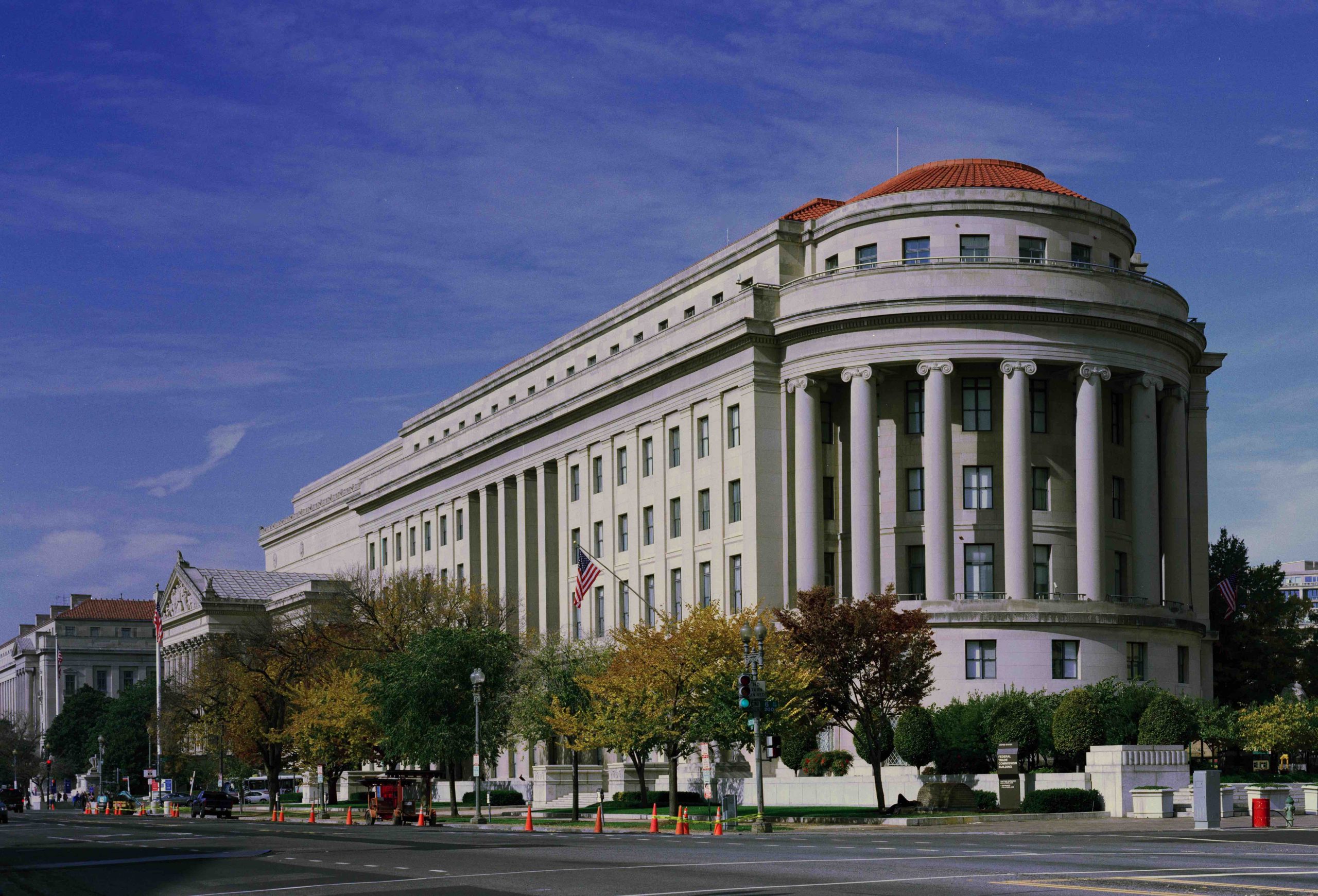David DePape — Paul Pelosi’s Accused Attacker — Is a Removable Alien, but Not a Mayorkas ‘Priority’
It has been reported that David DePape, who has been charged with attacking the husband of Speaker of the House Nancy Pelosi (D-Calif.), is a Canadian national and a nonimmigrant overstay. Because he apparently had no prior criminal convictions, DePape would not have been considered a “priority” for removal under Biden administration DHS guidelines. He should have been, but then such priorities miss an important point: Immigration enforcement creates its own momentum, encouraging other aliens to obey the law and making it much easier for ICE officers to do their jobs.
The Mayorkas Memo and Biden Administration Enforcement Guidelines. Through the issuance of three separate memos — the first rolled out directly after President Biden was sworn in — the administration has attempted to constrain the ability of U.S. immigration officers to investigate, question, arrest, detain, prosecute, and remove aliens in the United States (collectively known as “enforcement action”).
The latest memo was issued by DHS Secretary Alejandro Mayorkas on September 30, 2021, captioned “Guidelines for the Enforcement of Civil Immigration Law” (Mayorkas memo).
Building upon and refining the two preceding guidance memos, the Mayorkas memo “prioritizes” three classes of aliens for enforcement action: spies and terrorists (threats to national security); aliens who entered illegally on or after November 1, 2020 (threats to border security); and aliens convicted of “serious criminal conduct” (threats to public safety).
While not as restrictive in its scope as the prior two Biden administration memos, the Mayorkas memo requires immigration authorities (primarily but not exclusively ICE officers and attorneys) to consider so-called “aggravating” and “mitigating” factors that “militate” in favor of or against (respectively) the taking of enforcement action against removable aliens.
The key tenet of the Mayorkas memo driving the Biden administration’s non-enforcement regime can be found on page two of that document:
The fact an individual is a removable [alien] … should not alone be the basis of an enforcement action against them. We will use our discretion and focus our enforcement resources in a more targeted way. Justice and our country’s well-being require it.
Current Status of the Mayorkas Memo. In April 2021, the states of Texas and Louisiana filed suit in federal district court in Texas to block the first two of the Biden administration’s immigration enforcement guidelines.
Their request was granted, and while the case was pending en banc review by all 17 judges of the U.S. Court of Appeals for the Fifth Circuit, the government dismissed its appeal. That returned the case to district court for consideration of the Mayorkas memo, which was issued while that appeal was pending.
In June, U.S. District Court Judge Drew Tipton issued an order vacating the Mayorkas memo. The Biden administration sought a stay of that order from the Fifth Circuit, which was denied in July. The Supreme Court thereafter also declined to stay Judge Tipton’s vacation of the Mayorkas memo, but agreed to hear the administration’s appeal of that decision in December.
As I explained recently, however, a coalition consisting of a group of Texas sheriffs and counties and an organization representing ICE officers asked the Supreme Court in October to allow it to intervene in that case, which is captioned U.S. v. Texas.
Why do they want to intervene? To ask the justices to enjoin — not just vacate — the Mayorkas memo.
Their motion for leave to intervene explains that even if the Supreme Court were to uphold Judge Tipton’s order vacating the Mayorkas memo, that action would not fully remedy the injuries they allege, which are based on costs related to arresting and incarcerating criminal aliens, including recidivists.
That’s because the administration would “remain free to proceed with the same or similar non-enforcement practices on an ad hoc basis in the future”. Therefore, they are seeking to enjoin such action, which as I explained in my earlier post is a remedy only the Supreme Court could provide.
Is an injunction in lieu of simply vacating the Mayorkas memo necessary? Apparently so, because as my colleague Jon Feere noted on November 1, the following new language on the ICE website “suggests that the vacated memorandum is still operational” notwithstanding Judge Tipton’s order:
ERO uses law enforcement and intelligence-driven leads to identify noncitizens who may present a threat to national security or public safety, or otherwise undermine the integrity of U.S. immigration laws. Upon identification and a thorough investigation, ICE officers then arrest noncitizens by conducting targeted enforcement actions. [Emphasis added.]
“ERO” is ICE’s Enforcement and Removal Operations branch, the subcomponent within the agency that performs most of those immigration “enforcement actions” against removable aliens. Feere explains:
Gone is any reference to the Biden administration’s “enforcement priorities” — but these new edits soften ERO’s mission by removing the straightforward “identify and arrest” language and replacing it with more process — process that is arguably consistent with the vacated memorandum. ERO can “identify noncitizens who may present a threat” but, as explained in a second sentence, only after “a thorough investigation” can officers then make an arrest. All ICE officers conduct an investigation before making an arrest, of course, but Mayorkas’s controversial memorandum requires ICE officers to spend a lot of time searching for justifications to not make an arrest. Under that memorandum, officers aware of a fully deportable illegal alien have been required to conduct an investigation to determine whether or not there’s a rationale (in the mind of Biden appointees) to not make the arrest.
That suggests that the concerns of the sheriffs and ICE officers in the coalition attempting to intervene in Texas are not purely theoretical. The Supreme Court has not ruled on their motion, but if it is granted, the justices would likely expand the “questions presented” and the issues they ultimately decide in Texas.
David DePape. Which brings me to DePape. He has been charged in both state and federal court with breaking into the Pelosis’ home in San Francisco’s Pacific Heights neighborhood early in the morning of October 28 to take the speaker (who was not home at the time) hostage, and of assaulting the speaker’s husband, 82-year-old Paul Pelosi, with a hammer.
DePape has plead not guilty in state court and enjoys the presumption of innocence, but if the charges are true, he’s not the sort of person anyone would want on the streets, and little else in his reported history dispels that conclusion. As per the New York Times on November 1:
In the days since the attack, those who know Mr. DePape have described a shy man who once seemed to live the lifestyle of a Bay Area hippie, making hemp jewelry and attending protests against a ban on public nudity, but who in recent years fell into homelessness, isolation and darkness, spending his time immersed in an online world of conspiracy theories and bigotry.
According to Fox News, an ICE source has confirmed that “DePape is in the U.S. illegally after a ‘longtime’ visa overstay.” Despite that fact, the Times reports:
From 2002 to 2009, Mr. DePape was registered to vote in San Francisco County and declared himself affiliated with the Green Party, according to county records that showed he voted once, in 2002. He attested to being eligible to vote.
Any time during his unlawful presence in the United States, DePape could have been removed back to Canada. But that did not happen, even though it appears he was arrested on local charges for trespass in San Francisco sometime around 2003.
Because there is no effective “exit” system to verify and account for the departure of nonimmigrants, the only way that ICE can generally find overstays is after such encounters by local authorities.
The Momentum of Enforcement. Which brings me back to the Mayorkas memo, and the Biden administration’s overall policies restricting ICE enforcement.
All three Biden non-enforcement memos place intense pressure on ICE officers not to take enforcement action, even after they become aware that an individual is a removable alien. And though the Mayorkas memo isn’t the most restrictive of the three, it is the most onerous for those officers, requiring them to consider various irrelevant factors, all in the name of “fairness” and “equity”.
You don’t have to trust me on that fact, however, because DHS stated as much in a “Considerations” memo that accompanied and implemented the Mayorkas guidelines.
It states the guidelines in the Mayorkas memo “are essential to advancing this Administration’s stated commitment to advancing equity for all, including people of color and others who have been historically underserved, marginalized, and adversely affected by persistent poverty and inequality.”
In other words, the secretary wants to tie the hands of ICE in removing people like DePape, an overstay from the Canadian province of British Columbia, because there is — in the administration’s opinion — systemic inequality in the United States.
I will leave it to the Supreme Court to mull that over (that passage in the Considerations memo played a role in the Fifth Circuit’s refusal to stay Judge Tipton’s order in Texas), but DePape’s case underscores why such restrictions are a bad idea.
When laws are enforced, the costs for violating those laws rise. In DePape’s case, strict enforcement would have made it more likely that he would have been subject to arrest, detention, prosecution, and removal. The latter would have all-but ensured he would never return to the United States legally.
The most mundane example of this concept is speeding. Most people do it, but they also slam on the brakes when they see a trooper. When there are multiple troopers on the highway, the costs for violating the law increase, and voluntary compliance with the law becomes the norm, not the exception.
Not only do the restrictions and impediments on ICE in the Mayorkas memo make it more difficult for officers to take enforcement action in each case, but they also make overall immigration enforcement nearly impossible, because — morality aside — they are few if any consequences for violators like DePape.
Enforcement of the immigration laws creates its own momentum because when the costs of violating the law rise, voluntary compliance with the law becomes the norm. It is difficult for ICE to identify overstays, but if they are dealt with stringently when identified, fewer aliens will overstay. That’s a simple fact, but one heretofore lost on this administration.
David DePape is innocent until proven guilty, but regardless of whether he is ever convicted, his is a case study in the costs of immigration non-enforcement — which has become the exception, not the rule, under the Biden administration.






